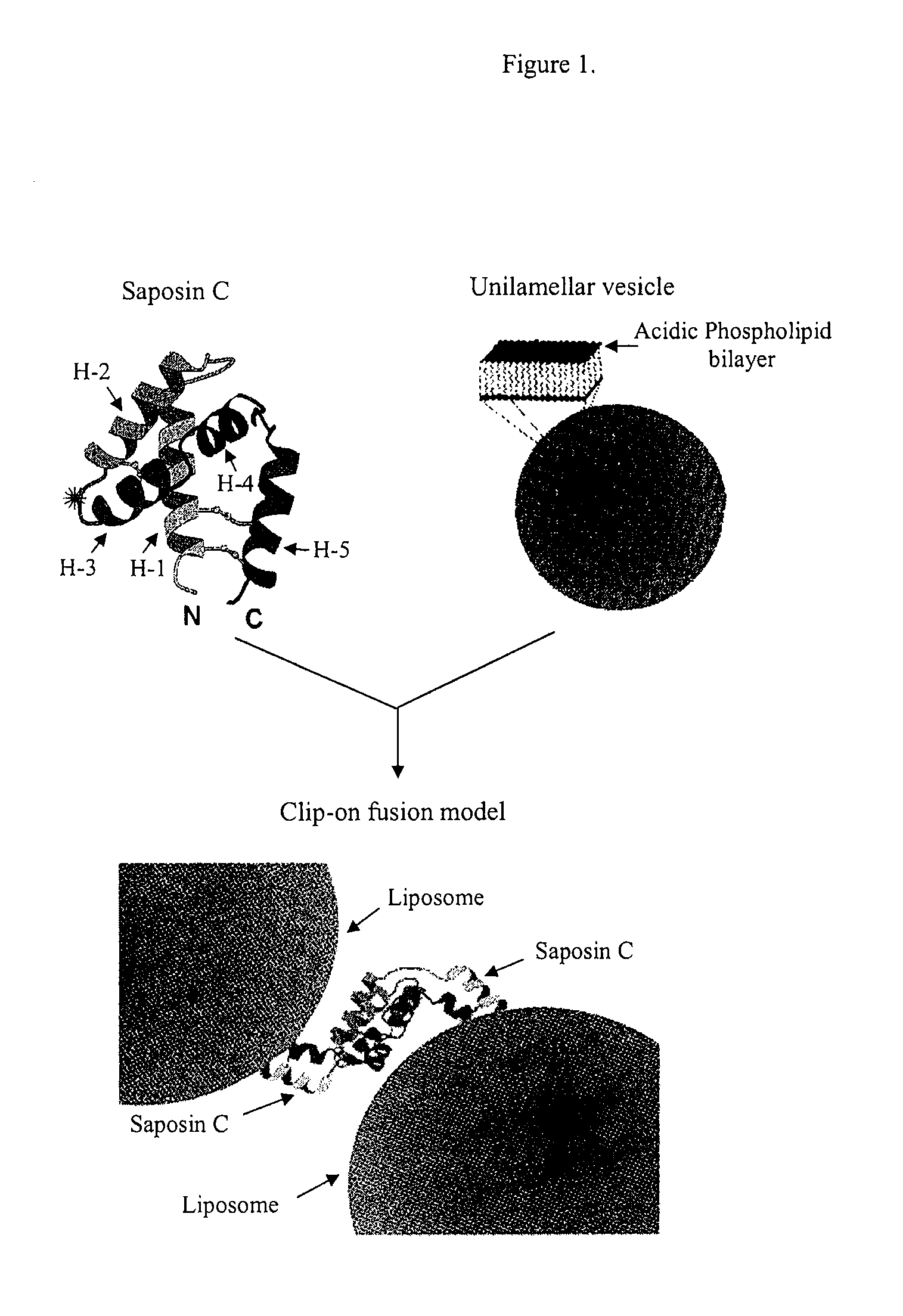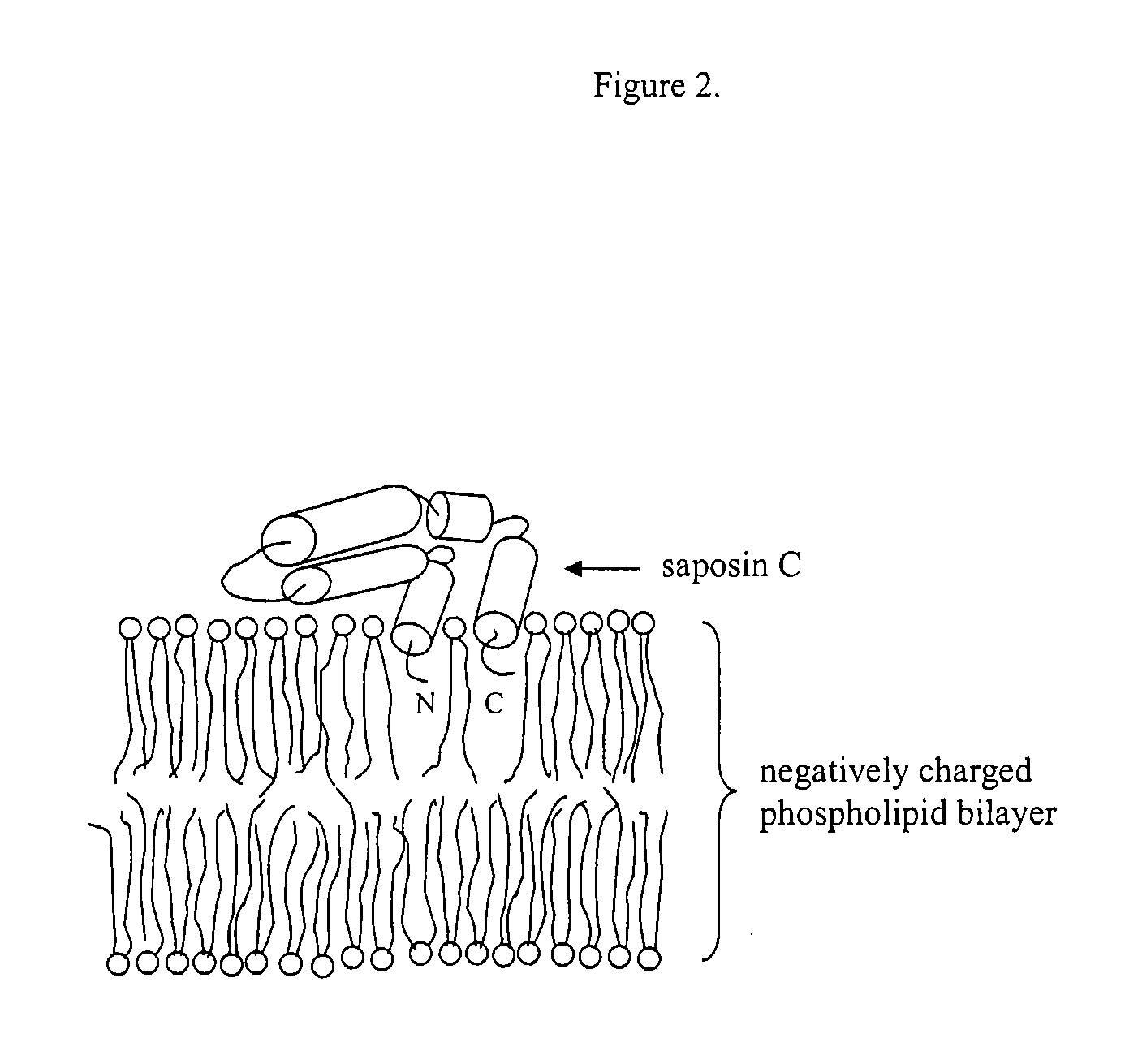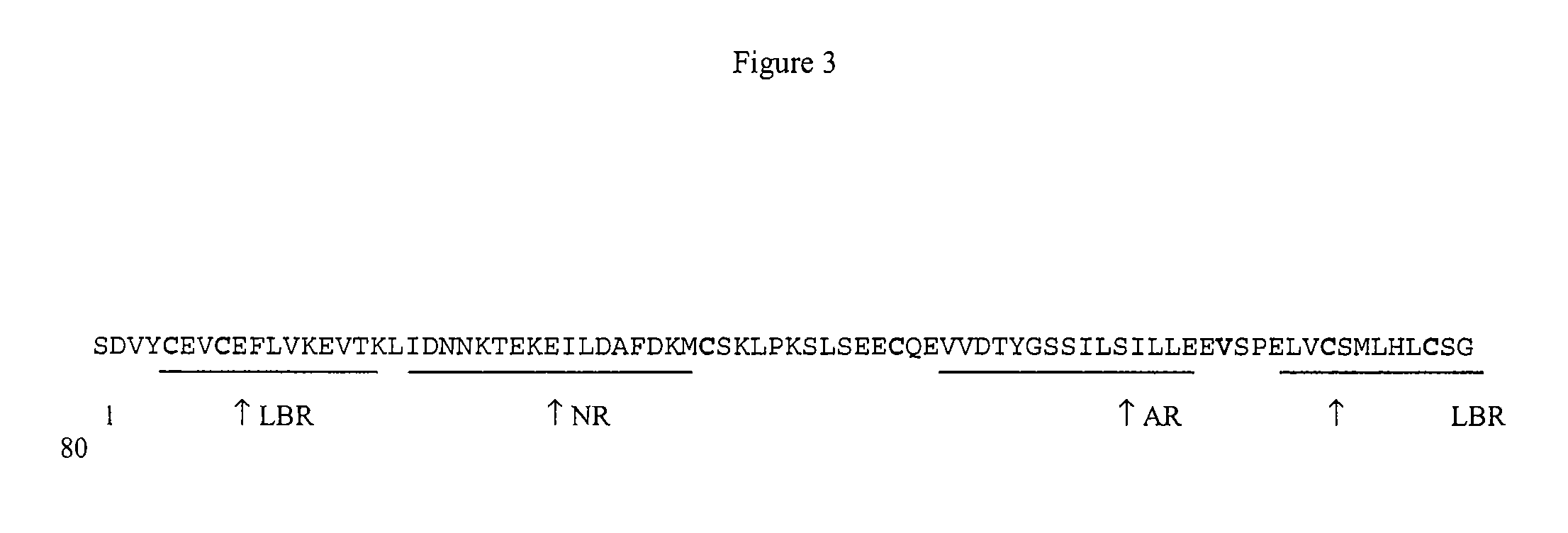Fusogenic properties of saposin C and related proteins and peptides for application to transmembrane drug delivery systems
a technology of saposin c and related proteins, applied in the direction of drug compositions, peptide/protein ingredients, metabolic disorders, etc., can solve the problems of inconvenient invasive procedure, limited utility, pain,
- Summary
- Abstract
- Description
- Claims
- Application Information
AI Technical Summary
Benefits of technology
Problems solved by technology
Method used
Image
Examples
experimental examples
Example 1
Saposin C and Liposome Preparation and Delivery In Vitro and In Vivo
[0343]Materials—The following materials are from commercial sources: mouse laminin, P / S, fetal bovine serum, and DMEM (Gibco BRL, Gaithersborg, Md.); Neurobasal medium with B27 supplement (Life Technologies); restriction endonucleases (New England Biolabs, Beverly, Mass.); pET21a(+) DNA vector, E. Coli host strain [BL21(DE3)], and His·Bind resin (Novagen, Medison, Wis.); monoclonal anti-His antibody conjugated with Alexa Fluor488 (QIAGEN, Valencia, Calif.); fluorescein-conjugated goat anti-rabbit and rhodamine-conjugated sheep anti-mouse antibodies (ICN / CAPPEL, Aurora, Ohio); antifade reagent (Ventana Medical Systems, Tucson, Ariz.); C4 reverse-phase HPLC column (Alltech Association Inc., Deerfield, Ill.); DOPS and 1,2-Dioleoyl-sn-Glycero-3-Phospho-L-Serine-N-(7-nitro-2-1,3-benzoxadiazol-4-yl) (NBD-DOPS) as stock solutions in chloroform (Avanti Polar Lipids, Alabaster, Ala.); polyethylenimine and papain (Si...
example 2
Synthesis of Liposomes Using Acidic Long-Chain Lipids, Neutral Long-Chain Lipids and Neutral Short-Chain Lipids
Materials and Methods
[0353]All the phospholipids DOPS, DPPC and DHPC are purchased in powder form from Avanti polar lipids and used without further purification. For dynamic light scattering (DLS) measurements, the molar ratio of DOPS to DPPC in the mixtures ranges from about 10 to about 1 with ([DPPC]+[DOPS]) / DHPC=about 4 for all the samples. The lipid mixtures are dissolved in filtered ultra-pure H2O (Millipore EASYpure UV) at a total lipid concentration of 10 wt. % using a combination of vortexing and temperature cycling, between 50 and 4° C. The homogenized 10 wt. % solutions are then progressively diluted into 5, 2, 1, 0.5 and 0.1 wt. % with filtered H2O.
[0354]Prior to DLS, stock lipid samples are diluted 5, 50 and 200 fold and are analyzed using an N4+ particle sizer (Coulter, Miami, Fla.). It is determined that diluting the system had no effect on size determination....
example 3
MR Detection of Tumor Cells Labeled with USPIO Using DOPS Liposomes
[0363]To prepare the liposomes containing MR detectable labels such as USPIO, the following method is used. Sonication of dextran coated USPIO particles in aqueous solution with DOPS does not yield sufficient encapsulation in the liposomes. In order to increase USPIO content in liposomes, a chemical coupling method as described by Bogdanov et al, Trapping of dextran-coated colloids in liposomes by transient binding to aminophospholipid: preparation of ferrosomes. Biochim Biophys Acta, 1994. 1193(1): p. 212-8 is used with minor modifications. Briefly, the dextran coating on the USPIO particles is oxidized to generate aldehyde groups. Aldehydes form a covalent Schiff bond at high pH with amines of DOPS. Liposomes obtained have a mean size of 150 nm as confirmed by N4+ Particle Sizer (Beckman Coulter, CA) analysis. The liposome solution is dialyzed against a low pH solution to detach USPIO bound to the external layer of...
PUM
| Property | Measurement | Unit |
|---|---|---|
| mean diameter | aaaaa | aaaaa |
| mean diameter | aaaaa | aaaaa |
| molar ratio | aaaaa | aaaaa |
Abstract
Description
Claims
Application Information
 Login to View More
Login to View More - R&D
- Intellectual Property
- Life Sciences
- Materials
- Tech Scout
- Unparalleled Data Quality
- Higher Quality Content
- 60% Fewer Hallucinations
Browse by: Latest US Patents, China's latest patents, Technical Efficacy Thesaurus, Application Domain, Technology Topic, Popular Technical Reports.
© 2025 PatSnap. All rights reserved.Legal|Privacy policy|Modern Slavery Act Transparency Statement|Sitemap|About US| Contact US: help@patsnap.com



